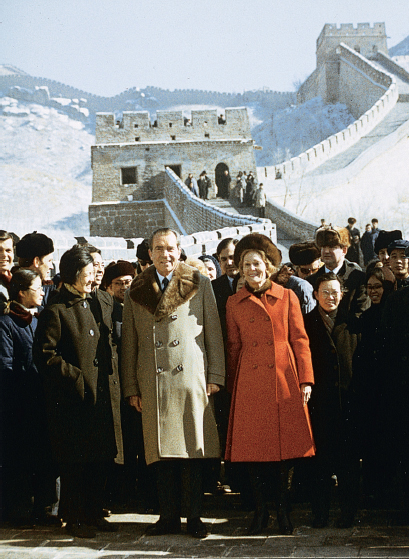How did U.S. foreign policy change under Nixon?
Printed Page 886

Nixon in China
“This was the week that changed the world,” proclaimed President Nixon in February 1972, emphasizing the stunning turnaround in relations with America’s former enemy, the People’s Republic of China. Nixon’s trip was planned to dramatize the event on television and, aside from criticism from some conservatives, won overwhelming support from Americans. Here, Nixon and his wife, Pat, visit the Great Wall of China. Nixon Presidential Materials Project, National Archives and Record Administration.
RICHARD M. NIXON TOOK office hoping to make his mark on history by applying his broad understanding of international relations to a changing world. Diverging from Republican orthodoxy, he made dramatic overtures to the Soviet Union and China. Yet anticommunism remained central to U.S. policy. Nixon backed repressive regimes around the world and aggressively pursued the war in Vietnam, despite mounting opposition to his policies. He expanded the conflict into Cambodia and Laos and ferociously bombed North Vietnam. Yet in the end, he was forced to settle for peace without victory.
CHRONOLOGY
1970
- – Nixon orders invasion of Cambodia.
- – Students are killed at Kent State and Jackson State.
1971
- – Portions of Pentagon Papers are published.
1972
- – Nixon visits China.
- – Nixon signs arms limitation treaties with Soviets.
1973
- – Paris Peace Accords.
- – CIA-backed military coup in Chile.
- – Arab oil embargo following Yom Kippur War.
1975
- – North Vietnam takes over South Vietnam, ending the war.
- – Helsinki accords.